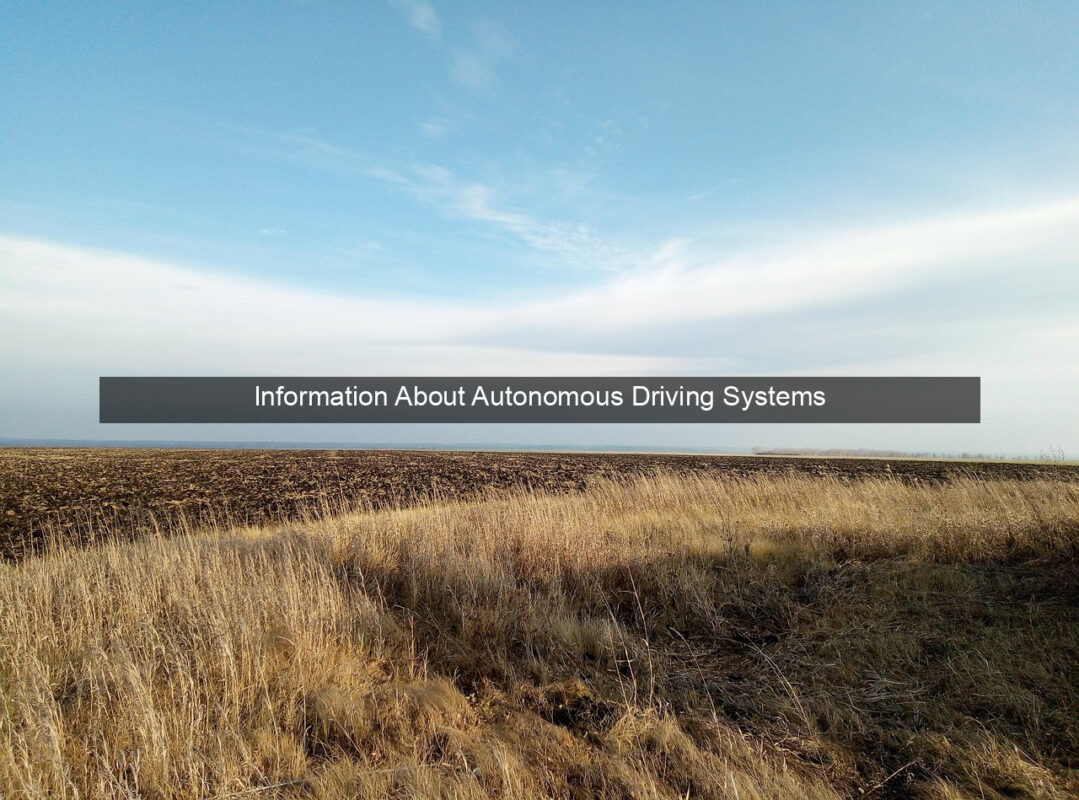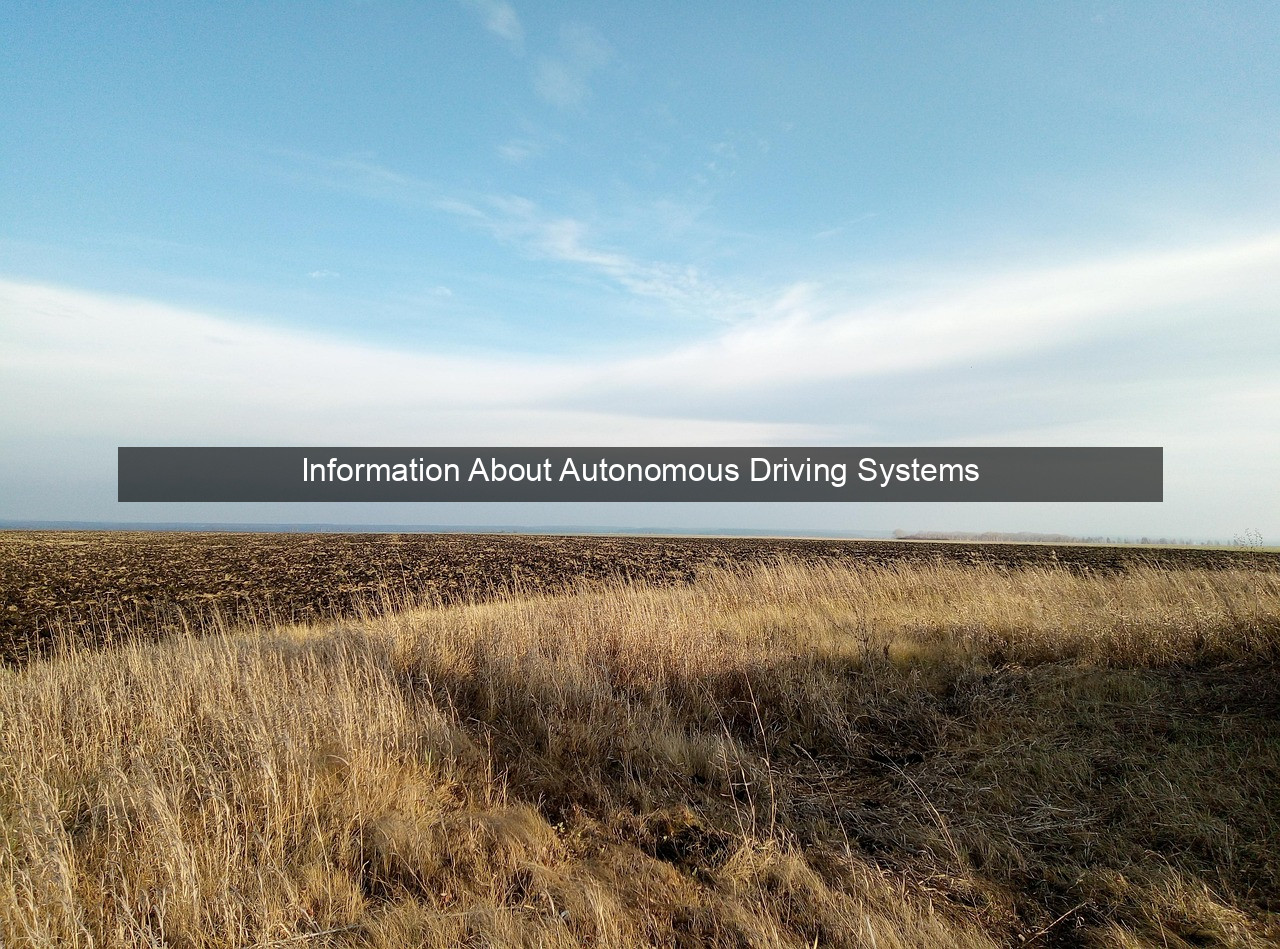Information About Autonomous Driving Systems

- Information About Autonomous Driving Systems
- The Rise of Autonomous Driving Systems: A Revolution on Wheels
- How Autonomous Driving Systems Work
- Sensing the Environment
- Processing the Data
- Controlling the Vehicle
- Levels of Autonomy
- Level 0: No Automation
- Level 1: Driver Assistance
- Level 2: Partial Automation
- Level 3: Conditional Automation
- Level 4: High Automation
- Level 5: Full Automation
- Benefits and Challenges of Autonomous Driving
- Enhanced Safety
- Increased Efficiency
- Improved Accessibility
- Challenges
- The Future of Autonomous Driving
- Infrastructure Development
- Public Acceptance
- Regulation and Legislation

The Rise of Autonomous Driving Systems: A Revolution on Wheels

Imagine a world where traffic jams are relics of the past, and car accidents are drastically reduced. A world where commuting becomes productive time, and long road trips are relaxing and enjoyable. This is the promise of autonomous driving systems, a technology poised to revolutionize transportation as we know it. Self-driving cars, once a futuristic fantasy, are rapidly becoming a reality, thanks to advancements in artificial intelligence, sensor technology, and computing power. This transformation promises not only increased convenience and safety but also a potential reshaping of urban landscapes and the very fabric of our daily lives. However, the journey to fully autonomous vehicles is complex, filled with both exciting possibilities and significant challenges.
How Autonomous Driving Systems Work
Sensing the Environment
Autonomous vehicles rely on a sophisticated suite of sensors to perceive their surroundings. These sensors act as the “eyes” and “ears” of the car, constantly gathering data about the environment. Cameras provide visual information, while LiDAR (Light Detection and Ranging) uses lasers to create a 3D map of the surrounding area. Radar detects objects and measures their speed and distance, even in adverse weather conditions. Ultrasonic sensors are used for short-range detection, particularly useful for parking and maneuvering in tight spaces.
Processing the Data
The data collected by the sensors is then fed into a powerful onboard computer. This computer uses complex algorithms to interpret the data and make decisions about how the car should react. Artificial intelligence plays a crucial role in this process, enabling the car to learn from experience and adapt to changing conditions. Machine learning algorithms are trained on vast amounts of data, allowing them to recognize objects, predict their behavior, and make informed decisions in real-time.
Controlling the Vehicle
Based on the processed data, the autonomous driving system controls the vehicle’s steering, acceleration, and braking. These systems are designed with multiple redundancies to ensure safety and reliability. For example, if one sensor fails, the system can rely on data from other sensors to continue operating safely. The control systems are constantly being refined and improved, with the goal of achieving a level of performance that surpasses even the most skilled human drivers.
Levels of Autonomy
Level 0: No Automation
This level represents traditional vehicles with no autonomous features. The driver is fully responsible for all aspects of driving.
Level 1: Driver Assistance
Vehicles at this level have features like adaptive cruise control or lane keeping assist, but the driver remains in primary control.
Level 2: Partial Automation
Features like Tesla’s Autopilot fall under this category. The system can control steering and acceleration/deceleration, but the driver must remain vigilant and ready to take over at any time.
Level 3: Conditional Automation
The system can handle most driving tasks, but the driver may be required to intervene in certain situations.
Level 4: High Automation
The vehicle can operate autonomously in most conditions, with the driver only needing to provide a destination.
Level 5: Full Automation
This represents the ultimate goal of autonomous driving, where the vehicle can handle all driving tasks in all conditions, without any human intervention.
Benefits and Challenges of Autonomous Driving
Enhanced Safety
By eliminating human error, autonomous driving systems have the potential to significantly reduce accidents. These systems are not susceptible to distractions, fatigue, or impairment, leading to safer roads for everyone.
Increased Efficiency
Autonomous vehicles can optimize traffic flow, reducing congestion and improving fuel efficiency. They can also communicate with each other to avoid collisions and maintain a smooth flow of traffic.
Improved Accessibility
Self-driving cars can provide mobility solutions for people who are unable to drive themselves, such as the elderly or people with disabilities.
Challenges
Despite the many benefits, autonomous driving technology faces several challenges. These include technical hurdles, such as ensuring the reliability of the systems in complex and unpredictable environments, as well as ethical and legal considerations, such as determining liability in the event of an accident.
The Future of Autonomous Driving
Infrastructure Development
The widespread adoption of autonomous vehicles will require significant investments in infrastructure. This includes improvements to road markings, traffic signals, and communication networks.
Public Acceptance
Building public trust in autonomous driving technology is crucial for its success. This requires addressing concerns about safety, security, and privacy.
Regulation and Legislation
Clear regulations and legal frameworks are needed to govern the development and deployment of autonomous vehicles.
| Level | Description |
|---|---|
| 0 | No Automation |
| 1 | Driver Assistance |
| 2 | Partial Automation |
- Sensor Technology
- Artificial Intelligence
- Connectivity
What are the different levels of autonomous driving?
Autonomous driving is categorized into six levels, ranging from Level 0 (no automation) to Level 5 (full automation).
How do self-driving cars perceive their environment?
Self-driving cars use a combination of sensors, including cameras, LiDAR, radar, and ultrasonic sensors, to gather information about their surroundings.
What are some of the key challenges facing autonomous driving technology?
Key challenges include ensuring system reliability, addressing ethical and legal concerns, and developing the necessary infrastructure.

